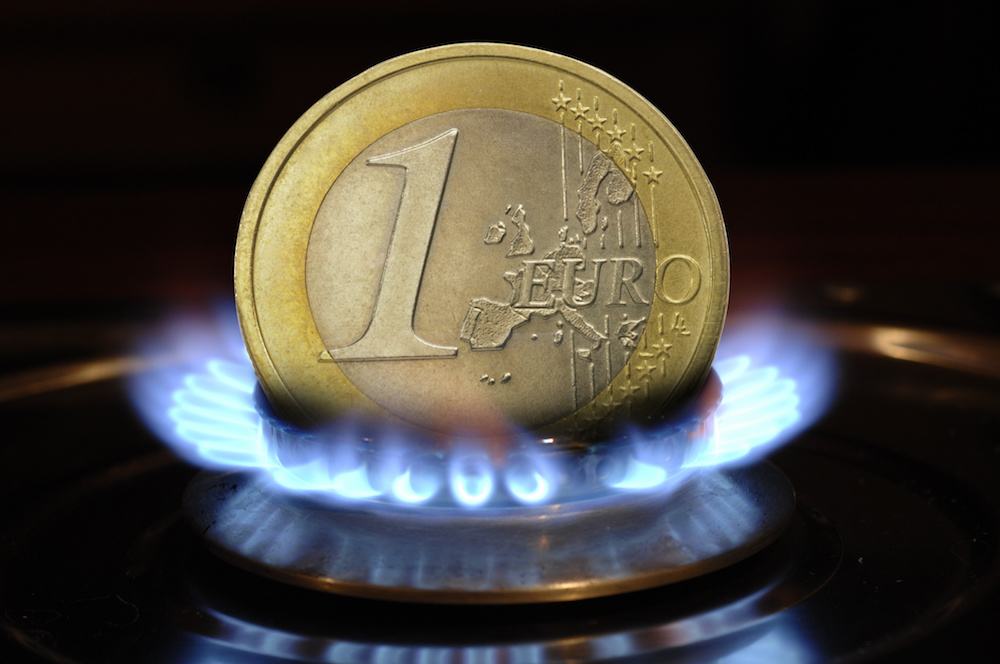
The price of gas (and electricity) in 2023: what are you really paying in Belgium?
Taking an interest in the breakdown of your gas price is essential. Why? Because it includes the amounts that make up your bill and shows you the expensive items! The results might surprise you.
If you use natural gas for heating, cooking, or hot water, you will have signed up to a supply deal. This is a quick and simple step, but it does require you to choose between the various gas suppliers in the Belgian market.
This is often where it gets complicated, because, as well as high-quality customer service, customers are usually looking for a low price per kilowatt hour (kWh) of gas. To compare gas prices, all you need to do is visit an energy supplier comparison site. However, choosing a cheap energy deal can still lead to high bills, even with low gas consumption. Let us explain.
The components of a gas bill
A bill for natural gas, the fuel that has replaced coal gas, is divided into three main sections: the gas price per kWh, the network costs, and the taxes. So, as a consumer, you pay money to several players in the gas market. The bad news is that some of these payments are imposed by the authorities.

1. The energy price, or the natural gas price
The gas price is set by the energy supplier. This may, for example, be Engie, Luminus or TotalEnergies, the companies that dominate the gas market. Alongside these giants, other suppliers such as Antargaz and Mega are trying to carve out a place for themselves.
In practice, the gas price varies from one company to another, and also from one deal to another. This has been made possible as a result of the liberalization of the market in 2007.
To identify the most attractive option, both of the elements that make up the price must be taken into account:
- the gas price per kilowatt-hour
- and the annual fee (also known as the standing charge).
This subtle distinction is important because the unit price per kWh could be very low but the annual fee could be high. This means that the benefits of the particular deal could disappear, depending on your gas consumption.
Which energy supplier suits you best? Find it out with a simulation!
2. The network costs: in other words, the distribution and transmission costs
The second part of the gas bill relates to the system costs. First, there are the costs generated by the activities of Fluxys, the high-pressure transmission system operator (TSO). Its role includes supplying gas to industrial consumers and to the distribution system operators (DSOs), who manage the link between the Fluxys infrastructure and residential customers via low- and medium-pressure gas pipes.
Did you know? Gas transmission and distribution are not liberalized activities. Fluxys and the various DSOs have a monopoly over the territory in which they operate, in other words, all of Belgium for Fluxys, and a defined region for each DSO. This means that consumers cannot escape the prices they charge or choose a different operator in the hope of paying less.
What if you don’t know the DSO for your town or village? Use our search tool!
3. The taxes levied by the authorities
If you look at your bill, you will see that there are a number of different energy taxes. These include VAT, which was lowered from 21 to 6 % in April 2022, the energy contribution, and the federal contribution. There are also the surcharges levied by the Regions.
So this element of the bill is independent of the natural gas supplier. However, as the supplier is responsible for billing, it receives the sums payable and passes them on to the relevant bodies.
Billing in kilowatt-hours (kWh) but a meter that measures cubic meters (m³)
Your gas supplier prepares your bill based on the kilowatt-hours you have consumed. This is why the suppliers’ pricing schedules indicate gas prices per kWh. But your gas meter shows the number of cubic meters (m³) supplied. What is the reason for this difference? Does this mean it’s impossible to find out the cost of gas per m³?
Compare now all energy suppliers active in Belgium and save money on your bill !
What is the equivalent of 1m3 in kWh?
The goal is for each household to pay for the energy actually received rather than a quantity of fuel. To achieve this, the calorific value of a cubic metre of natural gas needs to be expressed in kWh. So the DSOs calculate a conversion rate based on three criteria:
- The composition of the gas: this is constantly changing, depending partly on the origin of the natural gas. For example, lean gas, which is due to disappear in Belgium with the end of Dutch gas, has a different calorific value from rich gas.
- The altitude of your locality: gas contains less energy at higher altitudes due to the reduction in atmospheric pressure.
- The delivery pressure: the higher the pressure, the higher the conversion coefficient.
Once the conversion rate has been determined, it is multiplied by the volume of gas measured by your meter. To produce your bill, the supplier then multiplies this result by the gas cost per kilowatt hour indicated in your supply contract.
In Belgium, the average energy value of 1m3 of gas is 10 kWh.
Should you choose a variable or fixed coal gas (natural gas) price?
If you opt for a fixed price, you can be certain that your gas cost will remain the same throughout the duration of your contract. The advantage is obvious: it provides considerable peace of mind and bills that are easier to understand.
Conversely, variable prices change regularly as the market evolves. At the moment, the suppliers use quarterly or monthly indexation.
However, gas has an advantage over electricity: natural gas rates are less volatile. So choosing a variable-price gas contract means less risk of being hit by significant price rises.
Which supplier should you choose?
Whichever type of contract you choose, it is vital to choose your gas supplier carefully. This is not only to keep your gas costs as low as possible but also to benefit from efficient customer service.
Do you need help to find out which supplier is the best match for your criteria and your gas consumption? Please call our advisors on 0800 37 456 or contact them by email (info@energyprice.be).
What are the current gas prices in Flanders and Wallonia?
Which is the cheapest gas supplier? To find out, here are the key variable-price deals from the three main suppliers (December 2023).
| Supplier | Name of the deal | Gas cost per kWh (c€/kWh) | Annual fee (€/year) |
|---|---|---|---|
| Engie | Easy Indexed | 6.73 | 40.81 |
| Luminus | Comfy Flex | 6.51 | 42.40 |
| TotalEnergies | Pixel | 5.54 | 35 |
The rates mentioned in the above table correspond with the estimated yearly prices, in accordance with the methodology of the VREG.
Comparison of gas prices in Brussels
Finding a cheap gas supplier in Brussels is possible! All you need to do is compare gas prices. Here are the key variable-price deals from the main suppliers (December 2023).
| Supplier | Name of the deal | Gas cost per kWh (c€/kWh) | Annual fee (€/year) |
|---|---|---|---|
| Engie | Easy Indexed | 6.73 | 40.81 |
| TotalEnergies | Online | 6.44 | 35 |
The rates mentioned in the above table correspond with the estimated yearly prices, in accordance with the methodology of the VREG.
Changes in the gas price per kWh in Belgium
Since 2007, the energy market has been liberalized throughout Belgium. Aimed at cutting gas and electricity costs, has this process delivered on its promises? To find out, federal regulator CREG publishes a scoreboard every month tracking the price of the annual gas bill in Belgium and in the three Regions. It is thus safe to say that the gas bill has soared in recent years, especially in 2021 and 2022, when economic activities resumed after the lockdowns and Russia invaded Ukraine, a war which is still ongoing.
Thus, we learn that between December 2021 and December 2022, the annual gas bill of Belgian households has increased by € 404.81. If we analyse by Region, the rise is equally as impressive:
- + € 418.71 in Brussels (from € 2,750.60 in 2021 to € 3,169.31 in 2022);
- + € 427.87 in Flanders (from € 2,658.82 in 2021 to € 3,086.69 in 2022);
- + € 367.85 in Wallonia (from € 2,931.21 in 2021 to € 3,299.06 in 2022).
Discover all the energy suppliers promotions!
Compare electricity and gas prices and switch supplier for free in just a few clicks on Energyprice.be.
Although the price of gas has risen drastically in recent months, the gas bill of Belgians remains one of the lowest in Europe.
Let us not forget that the VAT on gas has been reduced from 21% to 6% since 1 April 2022 (and until 31 March 2023). Furthermore, on the same date, the CREG decided to change its figures for the average gas consumption of a standard Belgian household: from 23,600 kWh to 17,000 kWh a year. These two changes obviously have an impact on the estimation of the average annual price of gas on a given date.
Did you know? In Wallonia and Flanders, the public service obligations help to finance the installation of budget meters and manage vulnerable customers. However, in the south of the country, the costs of these meters have soared.
How can you reduce your gas bill?
Regardless of whether prices are falling, it’s important to compare gas prices at least once a year. Why? Because the introductory promotions for new customers are only valid for that length of time, and these discounts often mean you can obtain cheap gas and so make significant savings on your gas bill.
If you find the idea of an annual comparison off-putting, don’t worry: changing gas supplier only takes a few minutes and the new supplier will take care of the entire process for you. And it’s free!
If you still have questions and would like more advice, please contact our advisers. They can be reached on 0800 37 456 from 9.00 am to 12.30 pm and from 1.30 pm to 5.30 pm. They will do everything they can to put an end to your large gas bills – and that’s a promise!
It is also important to keep an eye on your average gas consumption in order to adapt your monthly instalments as best as possible. As a matter of fact, the more they suit your actual consumption, the less likely it is that you will receive a bad suprise with your year end bill.
What about the price of electricity?
In terms of price, electricity is composed in the same way as gas and comprises four distinct elements:
- The price per kWh;
- Transmission and distribution costs;
- Federal and regional taxes;
- VAT.
The key difference between electricity and gas is that there exist multiple rates for electricity on the same rate card as there are three types of electric meters, whereas gas only has a single rate:
- The single-rate meter shows only one consumption index and therefore only has a single price per kWh, regardless of the time of day or week;
- The dual-rate meter shows two indexes, one for the consumption during the day and one for the night and the weekend. This option is attractive because the price of the kWh is lower during the latter time slot. It is therefore the ideal time to use your energy-intensive appliances such as your washing machine;
- The night-only meter also show a single index. This type of meter is usually installed when your house produces heat or hot water from electricity (with a heat pump, for instance).
The evolution of the price of electricity
Electricity has also not been spared by the increase in prices, although the difference is relatively smaller. According to the CREG scoreboard, the annual bill of Belgians has increased by € 671.33 between December 2021 and December 2022.
If we analyze the figures per region for the same period of time, we can notice a general increase in electricity bills:
- In Brussels: € 687.17 more between 2021 and 2022;
- In Flanders: € 585.28 more between 2021 and 2022;
- In Wallonia: € 740.54 more between 2021 and 2022.
Contact one of our advisers
Summary
- The components of a gas bill
- Billing in kilowatt-hours (kWh) but a meter that measures cubic meters (m³)
- Should you choose a variable or fixed coal gas (natural gas) price?
- Which supplier should you choose?
- What are the current gas prices in Flanders and Wallonia?
- Comparison of gas prices in Brussels
- Changes in the gas price per kWh in Belgium
- How can you reduce your gas bill?
- What about the price of electricity?
Also read on our blog

The Colruyt group is now offering green electricity and natural gas to Walloon and Flemish citizens. This new service is handled b…

Everyone wants to enjoy the “best energy deal”, have the cheapest gas and electricity supplier, and save as much as possible on th…

Reduce your energy consumption when cooking – it can be done! From using the right utensils to optimising your cooking time: disco…

You have probably already noticed that the length of an energy supply contract varies according to supplier and deals. But do you …

